Every October in the lunar calendar, Tra Vinh province buzzes with the mùa cốm dẹp (flattened young rice) season, a special delicacy indispensable to the Oóc-om-boc festival of the Khmer people. More than just food, cốm dẹp is a cultural essence, a crystallization of fragrant sticky rice and the skillful hands of the local people, offering a delightful traditional culinary experience for visitors.
Discovering Com Dep: The Essence of Khmer Cuisine
Cốm dẹp, a rustic dish imbued with Khmer cultural identity, has long been a source of pride for the people of Tra Vinh. Especially during the Oóc-om-boc festival, also known as the moon-worshipping festival, cốm dẹp becomes even more significant, serving as offerings and a delicious treat for honored guests. The sweet, fragrant taste of cốm dẹp, combined with the lively festival atmosphere, creates an unforgettable cultural experience.
To better understand this unique dish, let’s listen to the sharing of artisan Thach Sang, a Khmer man with many years of experience making cốm dẹp in Tra Vinh. He is not only a keeper of the traditional craft but also an inspirer, vividly recreating the cốm dẹp making process for visitors at the Khmer Ethnic Culture Museum, giving everyone a chance to experience and discover the beauty of the local culinary culture.

According to Mr. Sang, sticky rice is the soul of cốm dẹp. Therefore, in October of the lunar calendar, when the sticky rice season is in full swing, with plump and fragrant grains, the Khmer people begin making cốm. This is the secret to preserving the characteristic flavor of sticky rice in each grain of cốm. Freshly made cốm has an eye-catching light green color, offering a harmonious blend of crispiness and chewiness, with the rich aroma of young sticky rice lingering on the tip of the nose, creating an irresistible taste experience.
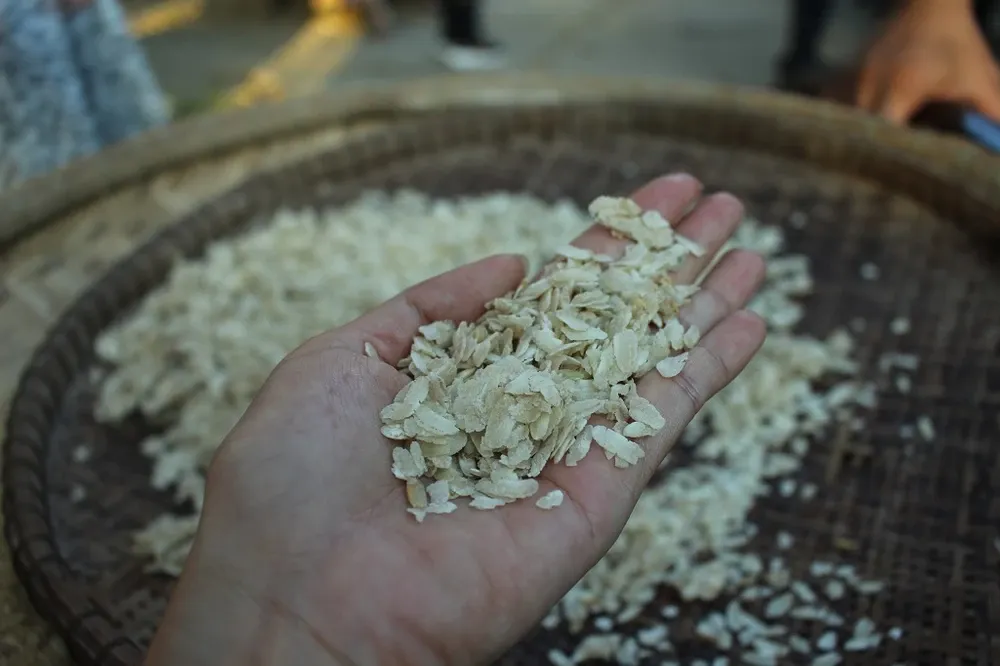
Witnessing the Traditional Com Dep Making Process
Not only sharing about the ingredients and timing of making cốm, Mr. Thach Sang also enthusiastically guides visitors through each step to create delicious cốm dẹp. The process of making cốm dẹp is not too complicated but requires meticulousness, skill, and experience from the maker.
The first and most important step is roasting the sticky rice. The rice is roasted in a clay pot over a wood-fired stove, the fire must be even and moderate. The roaster must continuously stir the rice to ensure it cooks evenly, without burning, and retains its natural aroma. When the rice is just cooked, with a certain crispness, it will be transferred to the cốm pounding stage.
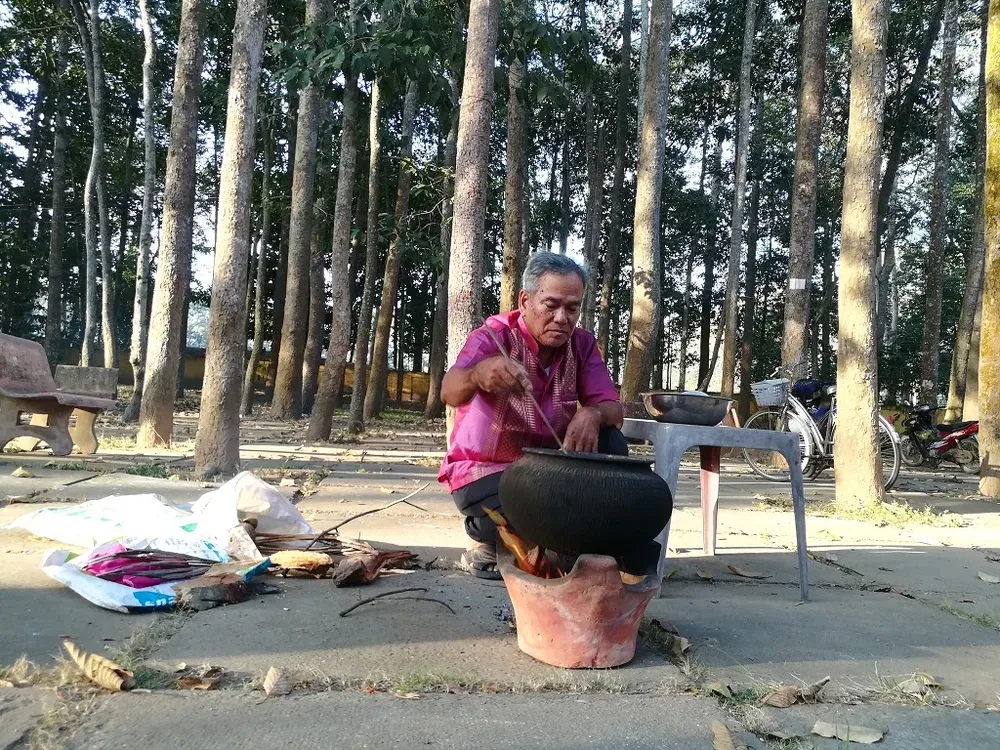
Pounding cốm is a fascinating step that requires rhythmic coordination between two people. Two cốm pounders stand facing each other, each holding a pestle and a spatula. They pound and scrape simultaneously so that the sticky rice clinging to the pestle falls into the mortar, continuing to be pounded until flattened. The steady sound of pestles pounding cốm echoes in the space, creating the characteristic sound of a traditional craft village.
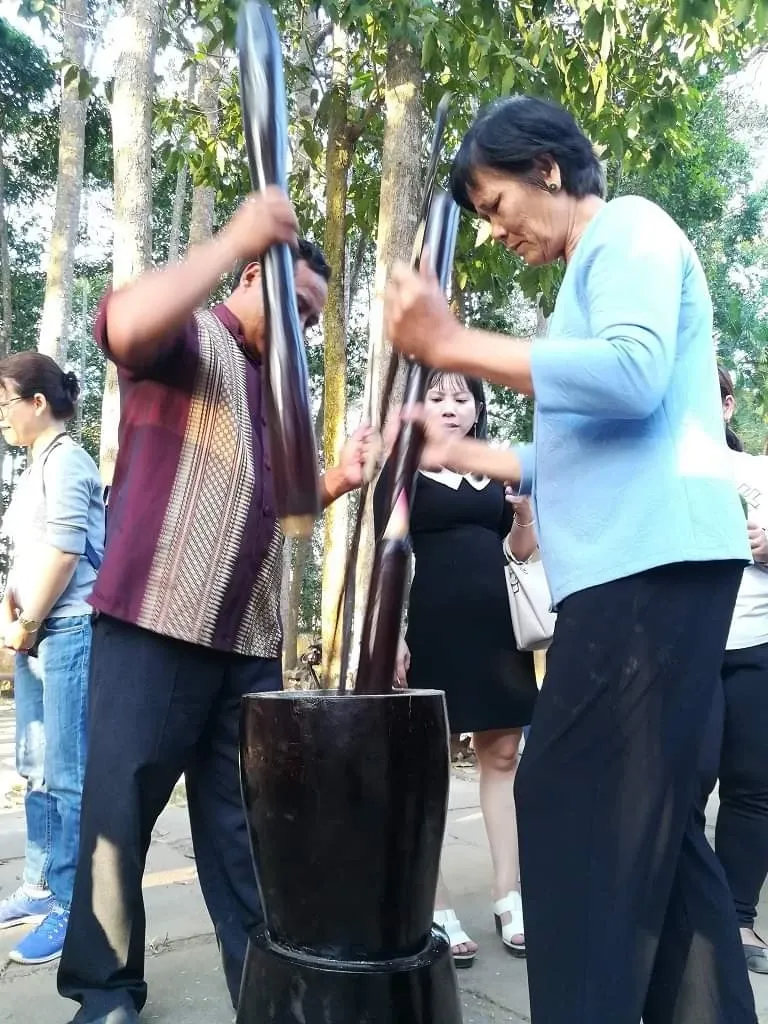
After pounding, the cốm is poured onto a large winnowing tray to remove husks and impurities. Next, the cốm is sifted to remove any substandard grains, keeping only the flattened, green, and most fragrant grains. This stage requires meticulousness and experience to select quality cốm grains, ensuring the characteristic flavor of the dish.
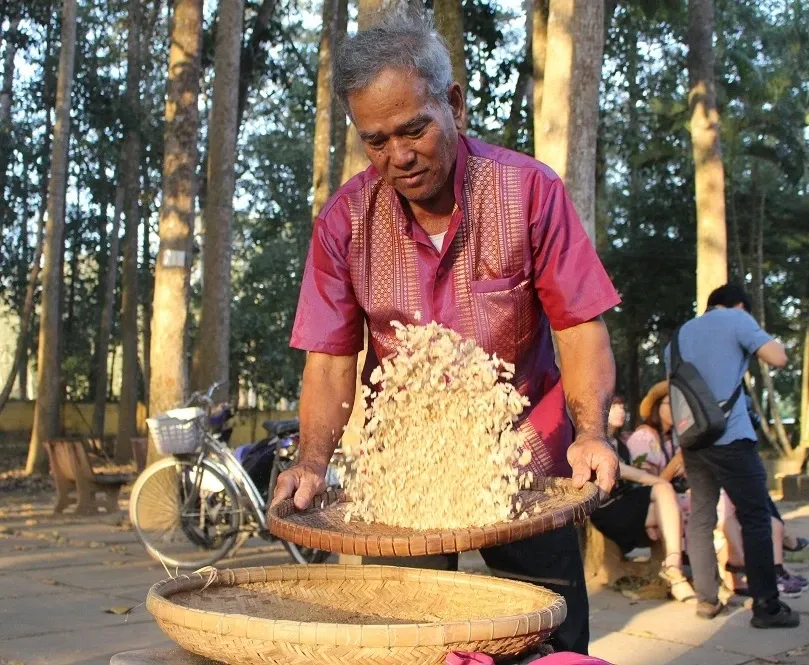
Finally, cốm dẹp is mixed with shredded coconut and white sugar. Depending on taste, people can adjust the amount of sugar accordingly. After mixing well, the cốm is left for a few hours for the sugar and coconut to soak evenly into the cốm, creating a characteristic sweet and fatty flavor. Cốm dẹp is often wrapped in banana leaves into small bundles, both aesthetically pleasing and preserving the delicious flavor.

Experiencing Com Dep Making: A Bridge Between Culture and Tourism
Today, the cốm dẹp making experience is not only a traditional cultural activity but also a unique tourism product, attracting many domestic and international tourists to Tra Vinh. At the Khmer Culture and Tourism Village of Tra Vinh, visitors can directly participate in the stages of making cốm dẹp, from roasting sticky rice, pounding cốm to mixing and wrapping cốm. This is a great opportunity for visitors to learn about the traditional cốm dẹp production process, discover the beauty of Khmer culture, and enjoy the characteristic flavor of this dish.
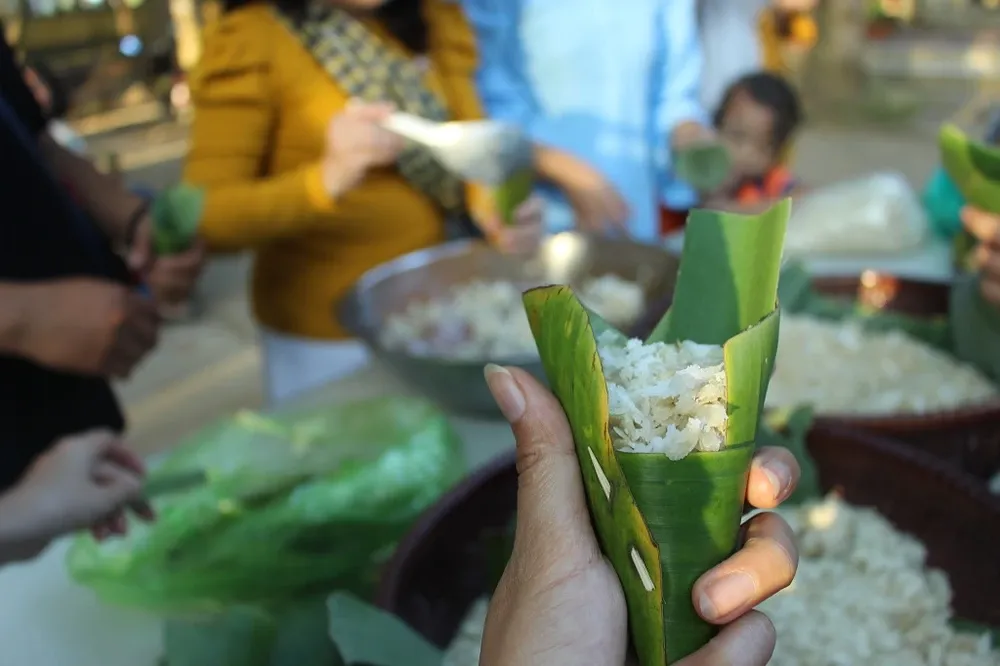
The development of tourism associated with traditional culture, such as the cốm dẹp making experience, not only helps preserve and promote local cultural values but also creates a stable source of income for the people. The Khmer Culture and Tourism Village project in Tra Vinh has contributed to creating jobs for many local people, especially young Khmer people, helping them to connect with their homeland and develop community tourism.
The rustic flavor of cốm dẹp not only captivates tourists but also serves as a connecting thread for those who are far from home to return to Tra Vinh every October of the lunar calendar. Enjoying delicious cốm dẹp together, experiencing the traditional cốm making steps together, is how we cherish and preserve the precious culinary cultural values of our nation.
If you have the opportunity to visit Tra Vinh during the Oóc-om-boc festival season, don’t miss the chance to experience making cốm dẹp and discover the unique cultural beauty of the Khmer people. This will surely be a memorable culinary and cultural journey in your heart.